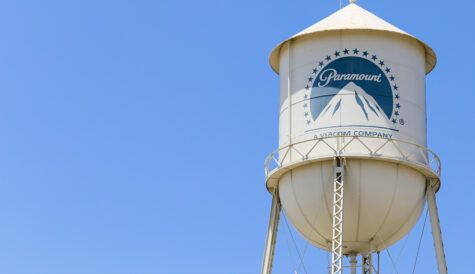Global ad marketplace could raise the bar for broadcaster collaboration
NBCUniversal is leading a multi-broadcaster initiative to turn its One Platform premium video buying and selling platform into a global tool that gives advertisers greater audience reach in multiple markets simultaneously. The idea is that it helps TV compete more effectively for globally assigned advertising budgets that currently go to the likes of Meta, and should mean incremental advertising revenues for the media owners involved.

Thomas Bremond (Source: FreeWheel)
Broadcasters around the world are being given the chance to contribute premium connected TV and multiscreen inventory to a global marketplace platform where advertisers can buy the audiences they need for multi-market campaigns. The expanded version of One Platform (NBCUniversal’s premium video buying/selling platform) is an NBCUniversal-led initiative underpinned by technology from FreeWheel, and was announced in June. Now live, its architects believe it can help broadcasters take a share of ad budgets that are assigned at a global level by brand marketers, and which currently go to non-TV platforms that offer simple, frictionless international buys, like Meta.
The belief is that if television, as a collaborative group of broadcasters and premium streamers, can provide their own single point of entry for ad buyers seeking cross-border audiences, brands will embrace the chance to buy television ads from their globally assigned budgets.
As Thomas Bremond, SVP & Chief Revenue Officer, International at FreeWheel, points out, television is generally not competing for the globally assigned budget today, but does compete for the remaining budget that is allocated to national-level media buying. National broadcasters should be looking to take a share of the global, as well as the ‘local’, ad budgets.
Bremond believes television can take a bigger share of the total advertising pie with this global platform approach. The result should be incremental revenue growth for ad-funded broadcasters, and the message is resonating with media owners. No new names have been announced since the global marketplace platform was revealed (although there are additions), so the known participants are: ATRESMEDIA, Bell Media, Seven West Media, Sky Media, Talpa Network, TF1 Group, and Tokyo Broadcasting System (TBS).
One media agency has also been named so far: Omnicom Media Group, and Johan Boserup, Global CEO for Investment at the company, articulated the media buyer view of the initiative at launch. “Today, there is huge friction when trying to execute a multi-market, multi-publisher premium CTV [connected TV] campaign from a single access point. Add the need for mass reach and scale, standardisation of measurement and reporting, and that friction is currently a barrier to entry. One Platform marks a significant step forward in solving these challenges.”
Streamlining the buying process
The enhanced One Platform covers Europe, the Americas, Asia and Australia (and MENA and Africa will be added). Bremond believes that by streamlining the buying process, it should be possible to ensure that more advertising budget ends up being spent on actual advertising inventory [i.e. maximising working media, as marketers would say]. “We already see lots of interest from buyers for a global audience within a quality environment,” he confirms. “Lots of brands have been saying this is exactly what they have in mind.”
One Platform already existed before June, as did NBCUniversal’s commitment to enabling global buying (alongside national and local/regional). The big change is the sharper international focus, new partners and the potential for much greater scale. FreeWheel provides technical smarts including marketplace technology that allows broadcasters to list the inventory they are willing to sell (which is matched to demand), inventory management, ad decisioning and programmatic capabilities.
Bremond believes this has to be a multi-broadcaster (and multi premium publisher) collaboration to achieve the audience reach and inventory scale needed – nobody could do it alone, including NBCUniversal. While key markets have one named broadcast partner currently, there is no exclusivity on this platform, so there could eventually be multiple broadcasters involved in any given market.
The expanded global marketplace has been operating since October, with campaigns running through it, but it is currently in pre-launch phase while testing and integrations continue. In addition to connected TV and multiscreen inventory, the platform supports addressable linear TV buys, but not standard linear (broadcast) television. Inventory can be acquired via direct buys or programmatically. With some exceptions, buyers will buy an audience rather than a network or show.
The expanded One Platform global marketplace is designed so the broadcast partners do not simply receive requests for inventory contributions to a campaign that was sold by someone else. They can also sell a global campaign and initiate its execution through the platform. “This is a two-way marketplace – [all] broadcasters can be the originating point,” Bremond emphasises.
Wherever the sale originates, the request for global audience/inventory is communicated to the partner media owners, who decide what they want to offer (and whether they offer guaranteed spots or remnant {unsold} inventory, for instance). The media owners can set their own rules on the advertising that is placed within their inventory, so can avoid a given category of advertising or ensure exclusivity for a car manufacturer that is already in their ad break, for example.
Only inventory that is available for a campaign is surfaced, with the FreeWheel technology providing visibility into what can be offered to the global advertiser (or their media agency). The One Platform marketplace will forecast audience reach based on inventory it expects to be available. A key technology enabler is the harmonisation of audience definitions. The marketplace aggregates all the inventory offered from different broadcasters (or premium streamers) to meet the campaign objectives.
Rising tide
At launch, NBCUniversal said it was looking to enhance the premium video ecosystem “and build the foundation for greater industry advancement and collaboration at an international level across data and identity, activation and automation, ad innovation and measurement.”
Bremond believes that existing multi-broadcaster pan-regional [e.g. pan-European] sales collaborations can co-exist with the new One Platform solution, and so too can national-level shared multi-broadcaster planning/buying platforms. These could be connected into the larger marketplace, he says.
Talking about the One Platform global marketplace generally, he says: “The idea is that a rising tide lifts all boats.” The focus today is on launch, but Bremond infers that once proven, the platform could become even more open, as seen with other joint industry initiatives that were initially driven from a single television group.
He believes the ad-supported television industry can use collaboration to become more competitive against digital (non-TV) giants – with results that benefit TV funding economics.



